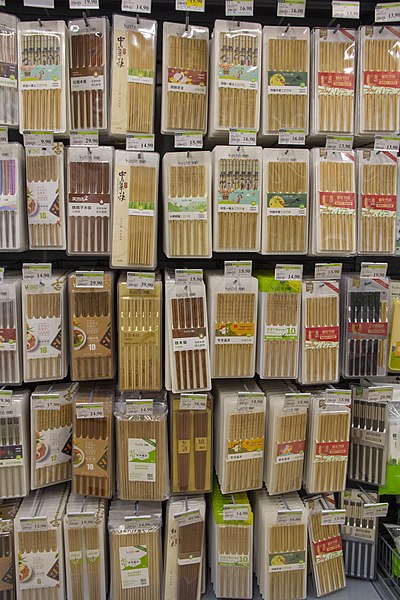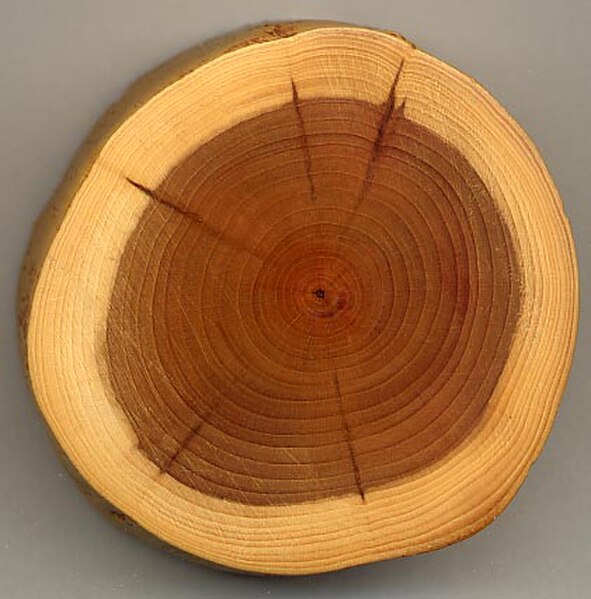Chopsticks are shaped pairs of equal-length sticks that have been used as kitchen and eating utensils in most of East Asia for over three millennia. They are held in the dominant hand, secured by fingers, and wielded as extensions of the hand, to pick up food.
Various chopsticks, from top to bottom: • 12-inch (30.5 cm) ruler (for scale) • Chinese melamine chopsticks • Chinese porcelain chopsticks • Tibetan bamboo chopsticks • Vietnamese palmwood chopsticks • Korean stainless steel flat chopsticks • Korean matching spoon in a sujeo • Japanese palmwood couple's set (two pairs) • Japanese child's chopsticks • Disposable bamboo chopsticks from Japan (in paper wrapper)
Silver chopsticks, spoon, and bowl from the Song dynasty
A painting of a Japanese woman using chopsticks, by Utagawa Kuniyoshi
Chopsticks on a store rack
Wood is a structural tissue found in the stems and roots of trees and other woody plants. It is an organic material – a natural composite of cellulose fibers that are strong in tension and embedded in a matrix of lignin that resists compression. Wood is sometimes defined as only the secondary xylem in the stems of trees, or more broadly to include the same type of tissue elsewhere, such as in the roots of trees or shrubs. In a living tree it performs a support function, enabling woody plants to grow large or to stand up by themselves. It also conveys water and nutrients between the leaves, other growing tissues, and the roots. Wood may also refer to other plant materials with comparable properties, and to material engineered from wood, woodchips, or fiber.
A knot on a tree trunk
Wood knot in vertical section
A section of a yew branch showing 27 annual growth rings, pale sapwood, dark heartwood, and pith (center dark spot). The dark radial lines are small knots.
Cross-section of an oak log showing growth rings








